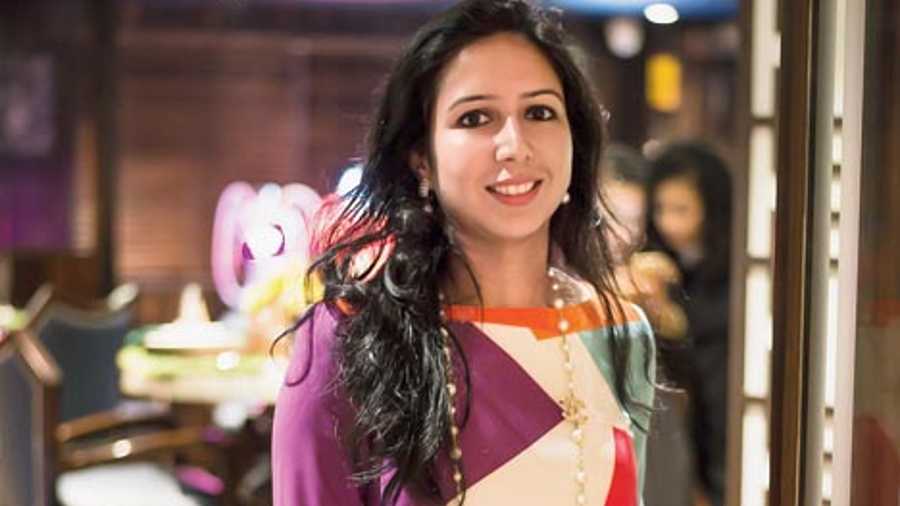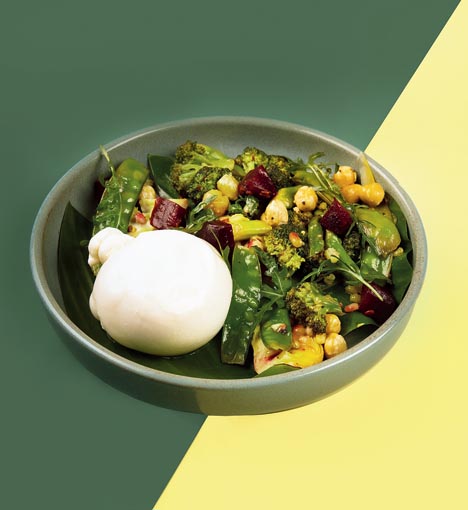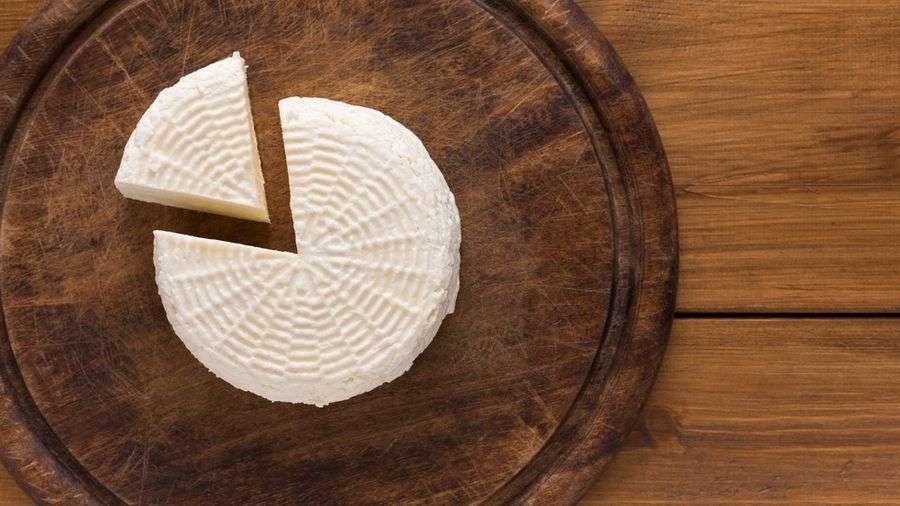Raise your hands if you grew up on a steady diet of Amul cheese cubes? These white pieces of creaminess defined my childhood. Brie, Camembert and Gouda were for the European holidays, or relatives who were kind enough to lug back lip-smacking delights from their travels abroad.
For the longest time, I honestly believed the only ‘Indian’ cheese was paneer — cottage cheese! It didn’t melt on my pizza, nor did it serve well as a cheese toast. As a child, it defied every semblance to what cheese should be. I am glad I grew up, for now I finally know the bevy of beautiful cheeses India boasts of.
Indian Cheeses
From Kashmir to Bengal, cheese marks the map of India, in its own wondrous way.
Growing up, my best friend had a staple breakfast: sandesh and a banana. Her mother couldn’t stop extolling the virtues of sandesh... made of chhena, an indigenous farmer’s cheese that is the bedrock of delightful desserts such as the rosogolla, chamcham and many more.
Bengal does boast of yet another kind of cheese: The Bandel. A legacy of the Portuguese, this smoky cheese has a certain umami flavour that goes well with salads and pastas. Its mouth-puckeringly salty bite is unlike anything else you would have tasted.

Vidisha Bathwal The Telegraph

Bengal does boast of yet another kind of cheese: The Bandel. A legacy of the Portuguese, this smoky cheese has a certain umami flavour that goes well with salads and pastas. Its mouth-puckeringly salty bite is unlike anything else you would have tasted.
For anyone who loves their Danish blue, the Churu from Sikkim will feel like home. It literally means “spoilt cheese”, and one may assume that given its greenish-blue, mouldy rind and pungent flavour profile, but it lends a more aromatic identity to soups such as the Ema Datshi — a cheesy spicy soup best eaten with rice.
Another cheese, the Chhurpi, also found in Sikkim and along the Himalayan areas, is made of yak’s milk, and occasionally cow’s milk. It comes in two varieties — hard and soft. The lesser-aged soft cheese can be used as a filling for momos, or even ground up with tomatoes and chillies as chutney.
The cheese map of India is heavy on the Himalayan region due to the abundance of fatty cow/yak milk. The eponymous Kalimpong cheese could be best compared to a Gouda, which tastes better as it matures. Small quantities of this cheese are produced today, as issues in the cold chain create barriers to sell the cheese outside the immediate region. However, one may still find it occasionally in New Market in Kolkata.
Moving up the Himalayan range, Kashmir boasts of a most moreish cheese called the Kalari. It’s stretchy, a tad funky and entirely delightful when warmed up on a tawa and served with chilli and lime, or stuffed into kulchas, creating a cheesy volcano that oozes deliciousness.
Qudam, another cheese from Kashmir, has an interesting rubbery, crumbly texture that resembles an Italian Caciocavallo, a gorgeous dry cheese.
The humble paneer may not melt literally, but it does melt in your mouth. Lending itself to innumerable dishes, it is a staple in Indian homes the world over. An excellent source of protein, paneer is one of the most versatile ingredients one can have in their kitchen.
Speaking of paneer, there is an interesting version called Topli nu Paneer, a Parsi delicacy made with milk, salt and rennet. Luxuriously soft, plump discs of this cheese are served in the whey released during the formation process and are a staple at Parsi weddings.
Artisanal Cheeses
Cheese has a way of making everything so much better — be it a creamy feta, or a slice of sharp Cheddar, cheese can elevate even the simplest of ingredients to a godly status.
The artisanal cheese culture in India has seen a boom ever since the winemaker, Sula, set up shop in Nashik, giving birth to expanding wine and cheese culture. India is one of the largest producers of milk in the world, yet the cheese industry is a highly under-exploited market, which is changing as we speak.
One of the earliest players in the artisanal cheese market was ABC Farms. Incorporated in 1976, with a mere 14 cows, the company has grown leaps and bounds and boasts of 70 different varieties of cheese — an enviable feat!
Acres Wild, a 22-acre farm in the Nilgiri Hills produces organic gourmet cheese with self-sustaining practices. They use no chemicals and produce 100 per cent vegetarian cheeses from microbial coagulants. They offer a two-day hands-on workshop on gourmet cheesemaking, which draws significant crowds.
Artisanal cheese producers have gone above and beyond the basic business of making cheese to create livelihoods for communities they thrive in. Himalayan Cheese, run by Chris Zandee, practices fair trade by buying from semi-nomadic Gujjar cattle rearers directly. They produce different types of Gouda — cumin, chilli, fenugreek and even a mustard version other than Cheddar and Kalari cheese in Srinagar.
These are just a few of the many artisanal cheese makers making beautiful cheeses all over India.
The growth of artisanal cheese brands in India can be attributed to many factors working hand in hand. One of them is the return of NRIs looking for cheeses of the same quality that they have had abroad. The attention and care that artisanal cheese makers pay to their product is exceptional, and produces an exceptionally superior cheese as opposed to mass manufactured, processed varieties available in the market.
The upsurge on social media has also played an important role in making the cheese-and-wine culture popular. People now look for cheese platters, giving a boost to ‘party’ cheeses.
Eat the cheese, keep the milk
Veganism is a way of life that renounces meat, milk and any products derived from animals. Cheese and paneer would never make their way into a vegan’s life, and that would be a travesty, thought Samyukta Kartik, a vegan chef and the founder of Yume Culinary. She has developed dairy-free recipes for a wide array of cheeses ranging from paneer, to mascarpone to feta and mozzarella! She uses nuts, especially cashews, to create the creamy texture, that is the highlight of her cheeses.
From Breakfast to Dinner
I could eat cheese the whole day — from a cheese toast for breakfast, pizza for lunch, macaroni and cheese for dinner and cheesecake for dessert — and these are just my six year old’s preferences! Cheese truly is the food of the Gods, chocolate perhaps comes in a close second! So, tell me, what are your favourite cheeses? I would love to hear from you!
Vidisha Bathwal is the founder of Paprika Gourmet, an exotic artisan catering service brand in Kolkata. She’s also a passionate foodie and a fitness enthusiast. You can reach her at vidisha@paprika.net.in
Recipes
Burrata Snow Peas Salad

Ingredients:
• 100g snow peas
• 50g roasted beetroot
• 100g blanched broccoli
• 4 artichoke
• Handful rocket leaf
• 100g hazelnut
• 50g green pepper
• 100g boiled barely
• 1 burrata
Dressing:
• 100ml olive oil
• 30ml reduced balsamic vinegar
• Pinch of salt and pepper
• 20ml orange juice
• 1tsp orange rind
Method:
Mix all the dressing ingredients in a bowl and keep aside. In a bowl add all the bleached vegetables, put the burrata on the side and pour the dressing over it. Serve cold.
Quattro formaggi bean loaf

Ingredients:
• 10g jalapeño
• 100g refried beans
• 50g corn
• 30g mozzarella cheese
• 30g cumin Gouda
• 30g smoked Cheddar
• 30g Edam ball cheese
• 1 milk loaf
Method:
Cut the bread and gently scoop it out. Fill it with refried beans and top it with mixed cheese, corn and jalapeño. Can serve it with salsa (optional).
Paneer Steak

Ingredients:
• 100g boiled mixed rice (white and brown)
• 1tbsp onion chopped
• ½tsp chopped garlic
• 1tsp oil
• Pinch of salt
• 1 spring onion
Method:
In a pan, add little oil followed by chopped onion and garlic, let it sweat. Now add the herbs and in the end add the rice. Once cooked, keep aside.
Cut the cottage cheese in a square shape of ½inch thickness. Marinate with chilli flakes, olive oil, salt and pepper. Pan sear it.
Now assemble on a plate by putting the rice, topped with the cottage cheese steak.
Drizzle store-bought black bean sauce on top of it (optional, any other sauce can be used).
Top with olive oil marinated cherry tomatoes and edamame beans and microgreens.
Food pictures: Paprika Gourmet
